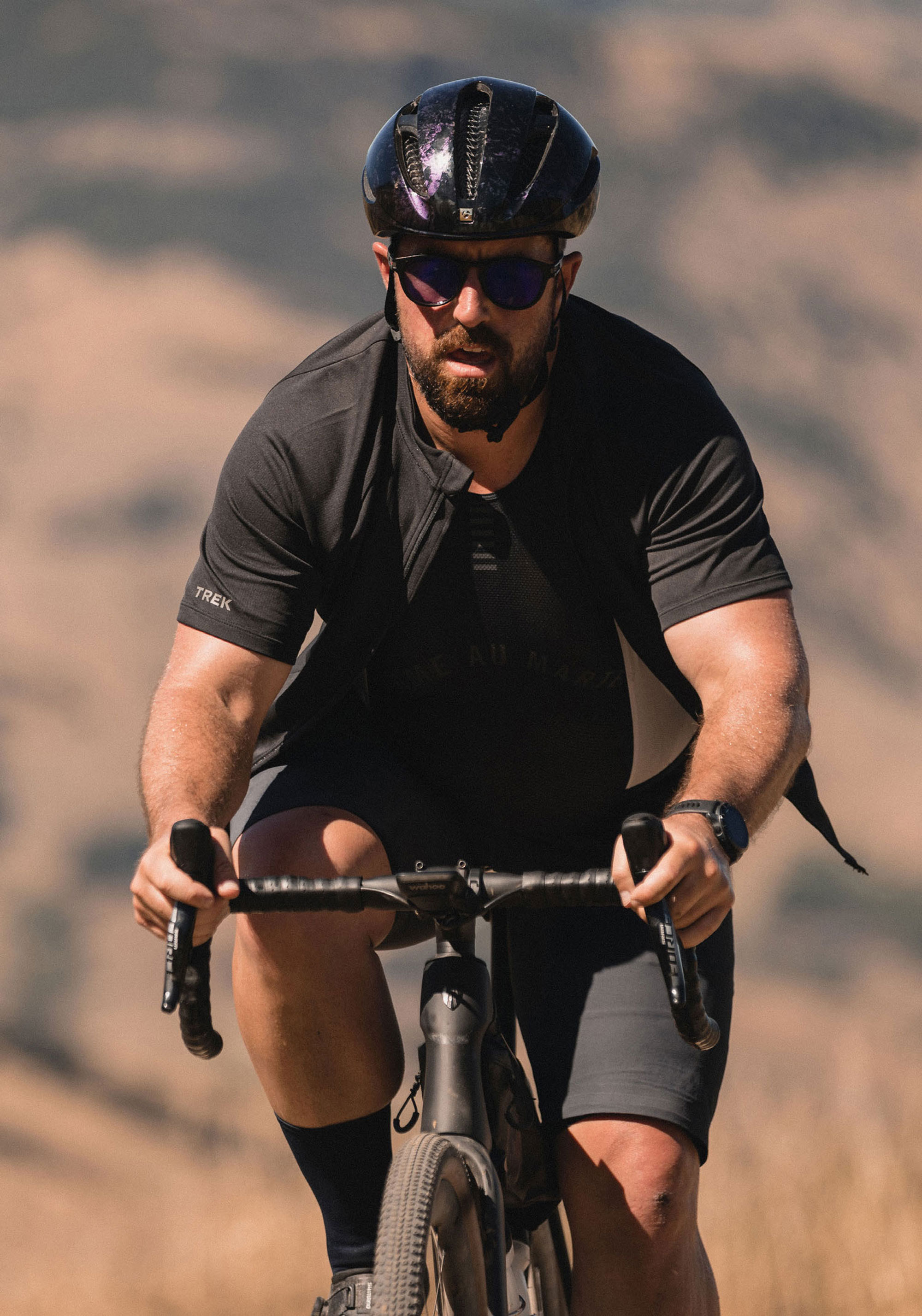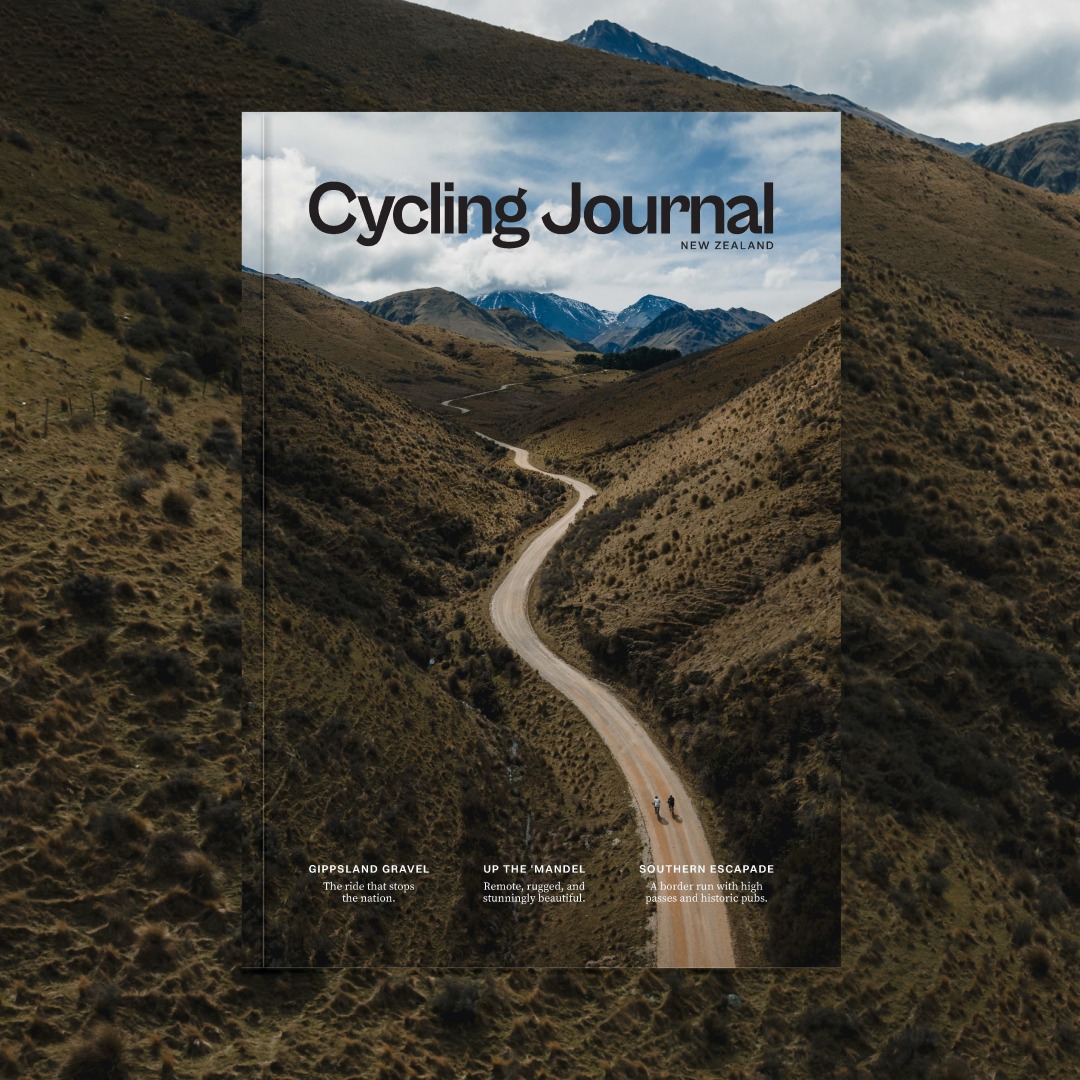Words Liam Friary
Images Cameron Mackenzie
RRP $14,299
Distributor Trek New Zealand
The road bikes of yesteryear seem a distant memory in this new-age modern-everything era. Perhaps the two can meet in the middle somewhere, though?
As modern riders search for more alternative roads, they are replicating cyclists of a bygone era. Perhaps the bikes are more refined, but the atrocious roads remain the same. So, the machine that one rides needs to be capable of more than just a ‘sealed road’ scenario. Trek, who has been on the tools of bike manufacturing since the 70’s, has redefined their Domane to better handle the alt roads and desires of riders nowadays.
The Domane has always been built around the hard, long, arduous northern European one-day Classics. Furthermore, the Domane has claimed wins at the most prestigious Classics, such as Paris-Roubaix and Tour of Flanders. Now in its fourth generation, the Domane has evolved. Perhaps the key standouts on this generation are that the frame is lighter – nearly 700g lighter for the SLR line – the front IsoSpeed is gone, and the rear IsoSpeed gets a makeover. This is all coupled with an impressive tyre clearance of 38mm. It’s a machine built to address the needs of not only the hard men and women of the one-day Classics, but many of today’s riders.
Let’s dive into the specs before we share tales from the field test. Trek keeps it in-house with their components brand, Bontrager. The cockpit has Bontrager’s carbon IsoCore bar, a traditional height drop with a slick stem that routes brake hoses through a channel on its underside and then down into the head tube. The handlebars, coupled with the endurance geometry of the SLR, make you want to stay in them for longer. The IsoCore bar also works in tandem with the bar tape and its gel inserts to counter buzzy vibrations from poor road surfaces.
I liked the new Bontrager short-nose saddle. It’s got a deep channel, firm but forgiving padding, and the shape allows for all-out efforts without discomfort. The R3 tyres – whilst robust and grippy – didn’t feel overly uber-rapid. They can handle light off-road duties and plenty of abuse from our rather rubbish roads. I’d rather have a bit more reliability than rolling speed, so these ticked the box in my book.

The rest of the spec of the SLR 7 is built around a SRAM Force eTAP AXS groupset. I have spent a lot of time on this groupset on other test bikes, and my own bikes, and haven’t had any complaints. The groupset provides slick, swift and accurate shifting – steep climbs, flat-out, it doesn’t drop a cog – shifts remained unflustered. Because of the rear derailleur’s chain-bounce-eliminating clutch, I often divert my path away from bitumen onto rough roads and light gravel.
For several months, I had the new Trek Domane SLR 7 under review. The real ‘field test’ was embarking on a mixed terrain, three-day jaunt, circumnavigating Banks Peninsula. The good thing about the versatility of the Domane meant a quick tyre change was all that was needed for this adventure. The rubber footprint was increased from 32mm to 40mm which isn’t stated in the technical paperwork, however, they fitted tightly but fine. I liked the fact that a road bike I had been accustomed to could be quickly changed to tackle harsher terrain. The long days in the saddle required a bike that wasn’t just comfortable but also efficient, as we wanted to cover ground at pace. The elevation around Banks Peninsula is anything but flat, so the lighter bike weight was welcomed.
On the road, the bike felt damn comfortable, and it promptly got up to speed – and easily stayed there. I liked that the geometry wasn’t overly aggressive, but it didn’t mean lack of speed. The position promoted better efficiency, which was welcomed for these longer ride days. You can clearly feel the race responsiveness, however, this isn’t compromised by comfort. As the circumnavigation route transitioned from road to gravel, and back to road again, the all-round ability of the Domane started to come through. I would say it’s not an absolute gravel bike – the 71.9° (size 56) head angle isn’t overly steep but does put you into a more aggressive position, and the handlebars are normal road spec without flare. In saying that, it didn’t underperform when it came to tackling rougher terrain. The compliance in the frame and fork helps the SLR track true. And, as mentioned, when you bounce back to sealed road it really comes into its own. I think it’s a very adequate bike for road racing, road riding, light gravel duties and long-haul endurance riding.
Now, back to the relentless climbs around Banks Peninsula. The SLR frame kept the weight down and the 1,022mm wheelbase, which is shorter than most for a bike of this type, ensured the power quickly transferred up the brutal ascents. I found that, when I wanted to stamp on the pedals and throw down some power, be that attacking or climbing, the front end felt solid; the stem and bar didn’t provide any undue flexing. Its balanced ride position, steering and handling, was dialed when came to descending. It inspires confidence to attack corners, providing ample grip which is a combo of stiff wide (internal) wheels, wider tyres (40mm) and a compliant frameset.
My regular road rides quickly replaced the jaunt around Banks Peninsula. I changed the tyres back to the stock 32mm Bontrager R3’s and that was it. Riding on familiar roads made the Domane SLR shine – the all-round comfort was superb. I skirted around the hills, ducked down light gravel lanes, attacked the flats and it never disappointed. I have said it before, but the Domane is very versatile. The ride quality is simply superb – striking the right balance of smooth, pinpoint handling, all-round comfort, all-out speed – and it can be darted down a rough track without any issue.
The Domane may trim down the bikes in the shed, as it can be thrown into any road race environment, it can hold its own on long endurance rides and it can venture beyond the bitumen. I found it very impressive and responsive on road rides and for light gravel. The Domane continues to redefine ‘Endurance Bike’ in this modern era, but keeps its ‘Classics’ pedigree.



